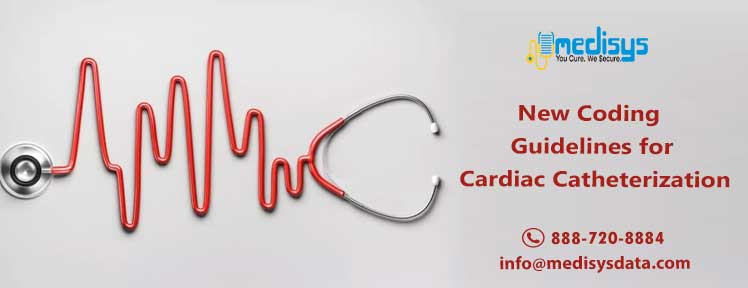Introduction
Cardiology is continually evolving, with advancements in procedures and techniques aimed at improving patient outcomes. Among these, cardiac catheterization remains a cornerstone in both diagnostic and interventional cardiology. With the advent of new coding guidelines, healthcare providers must stay updated to ensure accurate billing and reimbursement.
Importance of Accurate Coding
Accurate coding is essential not only for reimbursement but also for maintaining compliance with regulatory requirements. Incorrect coding can lead to claim denials, delayed payments, and potential audits. The new coding guidelines are designed to reflect current practices and ensure that healthcare providers receive appropriate reimbursement for their services.
Key Changes in the New Coding Guidelines
1. Specificity in Procedure Codes
The new guidelines emphasize greater specificity in procedure codes. This includes more detailed descriptions of the type of catheterization performed, such as right heart catheterization, left heart catheterization, or coronary angiography. Key procedure codes are as follows:
A. Right Heart Catheterization:
-
- 93451: Right heart catheterization including measurement(s) of oxygen saturation and cardiac output, when performed.
- 93456: Right heart catheterization with transseptal catheterization through the intact septum, including measurements and oximetry.
B. Left Heart Catheterization:
-
- 93452: Left heart catheterization including intraprocedural injection(s) for left ventriculography, imaging supervision, and interpretation, when performed.
- 93460: Combined right and left heart catheterization including intraprocedural injection(s) for left ventriculography, imaging supervision, and interpretation, when performed.
C. Coronary Angiography:
-
- 93454: Coronary angiography without catheter placement, including coronary artery bypass graft angiography (CABG), and all associated catheter placement(s), imaging supervision, and interpretation.
2. Bundling of Services
Certain services that were previously coded separately are now bundled. For example, the new guidelines may bundle imaging guidance or additional diagnostic tests performed during the catheterization procedure.
- Imaging Guidance: Imaging guidance used during catheterization procedures is now often included in the primary procedure code. For example, codes like 93452 and 93460 include imaging guidance for ventriculography.
- Adjunctive Procedures: Procedures such as intravascular ultrasound (IVUS) and fractional flow reserve (FFR) are bundled with the primary catheterization codes when performed concurrently. This reduces the need for separate billing and simplifies documentation.
3. Use of Modifier Codes
Modifier codes have been updated to better reflect the complexity and specifics of the procedures. For instance, modifiers indicating whether a procedure was performed in an emergency setting or involved additional complications are more detailed.
- Modifier 59 (Emergency Procedures): Used to indicate distinct procedural services. For instance, if a cardiac catheterization is performed in an emergency setting, modifier 59 should be added to denote the exceptional circumstances.
- Modifier 51 (Multiple Procedures): Applied when multiple procedures are performed during the same session. This helps in distinguishing between primary and secondary procedures, ensuring proper reimbursement.
- Modifier 22 (Increased Procedural Complexity): For procedures that are significantly more complex than usual, this modifier indicates increased difficulty, which may warrant additional reimbursement. Detailed documentation must support the use of this modifier.
4. Updated Diagnosis Codes
The new guidelines provide updated diagnosis codes that align with the latest clinical practices. This includes new codes for conditions commonly assessed or treated during cardiac catheterization, such as specific types of coronary artery disease or heart valve disorders.
-
Coronary Artery Disease:
- I25.10: Atherosclerotic heart disease of the native coronary artery without angina pectoris.
- I25.110: Atherosclerotic heart disease of the native coronary artery with unstable angina pectoris.
-
Heart Valve Disorders:
- I35.0: Nonrheumatic aortic (valve) stenosis.
- I35.1: Nonrheumatic aortic (valve) insufficiency.
-
Congenital Heart Defects:
- Q21.0: Ventricular septal defect.
- Q21.1: Atrial septal defect.
Practical Steps for Implementation
- Enhanced Training Programs: Conduct specialized training sessions focusing on the advanced aspects of the new guidelines. Use case studies and real-world scenarios to highlight the application of new codes and modifiers.
- In-depth Audits Implement detailed audit processes to ensure adherence to the new guidelines. Focus on areas prone to errors, such as bundled services and the use of modifiers.
- Consultation with Coding Experts: Engage with coding experts who have specialized knowledge in cardiology. Their insights can help navigate complex cases and optimize billing practices.
- Leveraging Technology: Use advanced billing software equipped with the latest coding updates. Ensure that the software can flag potential errors and suggest appropriate codes and modifiers.
To conclude,
Staying abreast of the new coding guidelines for cardiac catheterization is essential for healthcare providers in cardiology. By understanding and implementing these changes, providers can ensure accurate billing, reduce the risk of claim denials, and maintain compliance with regulatory standards.
At Medisys, we are committed to supporting healthcare providers with the latest information and tools to navigate the ever-changing landscape of medical billing and coding. For more information and personalized support, please contact us today at 888-720-8884 / info@medisysdata.com.
References:
- American College of Cardiology (ACC): ACC Coding and Reimbursement
- Centers for Medicare & Medicaid Services (CMS): CMS – ICD-10 and Other Coding Revisions












